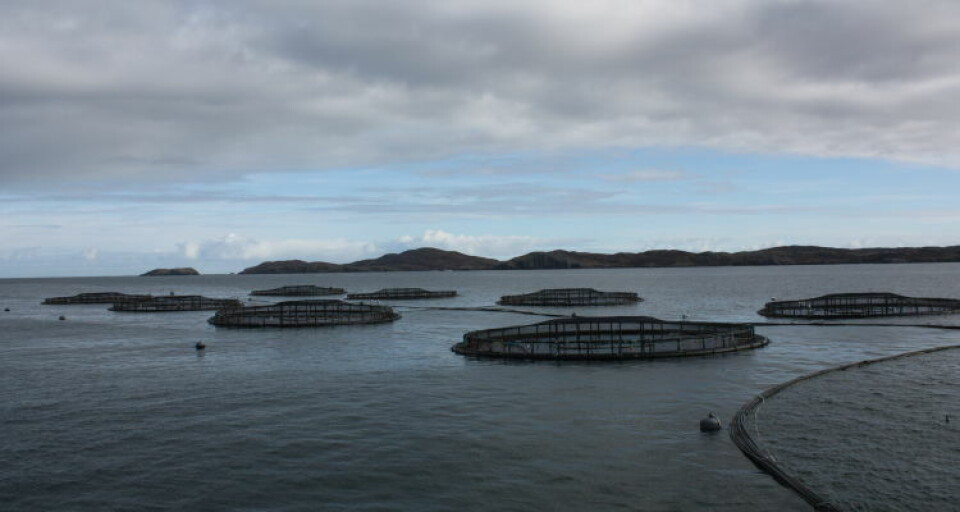
Inspector: SSC response to Loch Roag lice outbreak 'appropriate and timely'
The Scottish Salmon Company has published an Animal and Plant Health Agency (APHA) inspection report which concluded SSC took “appropriate and timely” action to combat a rapid, ten-fold increase in lice numbers at a site in Loch Roag, Lewis, last summer.
The louse infestation was reported in the mainstream press after an anti-salmon farming activist swam to one of the cages to film fish injured by the parasites and the video was posted by Scottish investigative news website The Ferret.
In a statement on its website, SSC said it had decided to release the document “in order to provide context to the extremely challenging and unprecedented situation experienced in Loch Roag”.
‘Sudden and significant outbreak’
SSC said that due to unusually high sea temperatures and lack of rainfall at that time, the farm experienced a sudden and significant outbreak of juvenile sea lice, affecting fish that up until that point had been in very good health.
It added: “Urgent action was taken by our vets who immediately provided emergency treatment for our fish. Some of the worst affected fish could not be saved, however, the vast majority responded well to our interventions.
“We are a transparent organisation and are committed to maintaining positive relationships with a range of government and environmental agencies. We facilitated visits from the SSPCA, the Marine Scotland Fish Health Inspectorate and veterinarians from the Animal and Plant Health Agency (APHA) – all of whom we cooperated with fully and were satisfied by the immediate steps taken to remedy the situation.”
The APHA document details a visit to SSC’s Vacasay site on September 5, following a complaint on August 30 alleging poor welfare due to sea louse infestation. An APHA inspector and an inspector from Scotland’s Fish Health Inspectorate accompanied an SSC vet to the site.
Early harvest, Hydrolicer and Slice
The report’s author said SSC had a site-specific sea lice treatment strategy which at Vacasay involved using a Hydrolicer, early harvest (two cages had already been depopulated), in-feed treatment with emamectin benzoate (Slice) which was being used in five cages with smaller fish, and bath treatment with either azamethiphos or deltamethrin in the worst-affected cages.
The author wrote: “The fish were treated in May and apparently there was good clearance of lice. In June the lice levels were low, however in mid-July the numbers had risen ten-fold in a week and were over the reporting level. On 22/07/18 the whole site was treated using the Hydrolicer and this was repeated in weeks commencing 06/08/18, 27/08/18 and 04/09/18.”
They added: “Treatment was under way during the visit and we were able to observe the fish leaving the dewatering part of the Hydrolicer and I did not see any badly affected fish (white heads).
‘Removed and euthanised’
“The fish were crowded carefully before being treated and the water in the crowded area was being oxygenated to reduce the stress on the fish. At this point badly affected fish were removed and euthanised (Tricaine in water bath). I was able to see that a high proportion of the fish had significant numbers of lice and there were a few fish with some lice damage visible on their heads ('white heads'). Treatement of whole site due to be completed by 07/09/18. In the worst affected cage (3), I counted approximately 60 visibly affected salmon swimming near the surface of the cage which contained approximately 27,000 salmon.”
The APHA inspector concluded: “The site has experienced a high level of lice infestation but the fish have been under veterinary supervision and have received suitable treatment in line with the site treatment strategy. I am content that the treatment of the fish at this site has been appropriate and timely. I do not intend to revisit the site.”
Read the full report here and a preliminary report here.























































